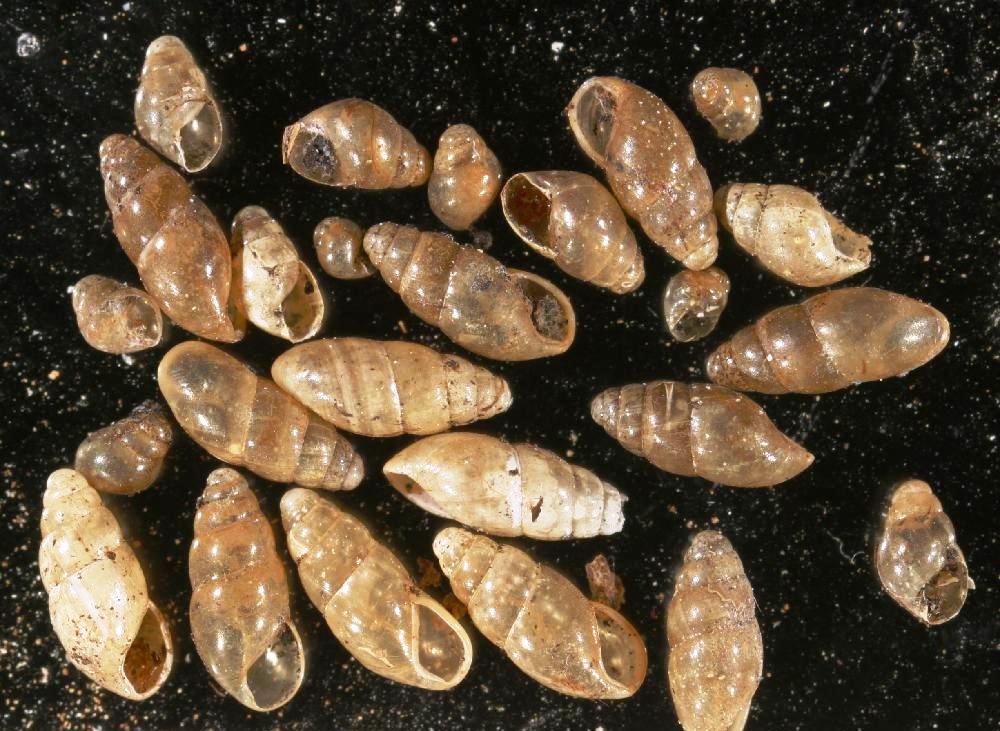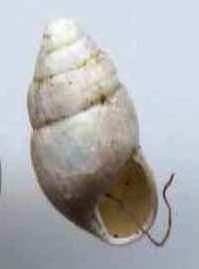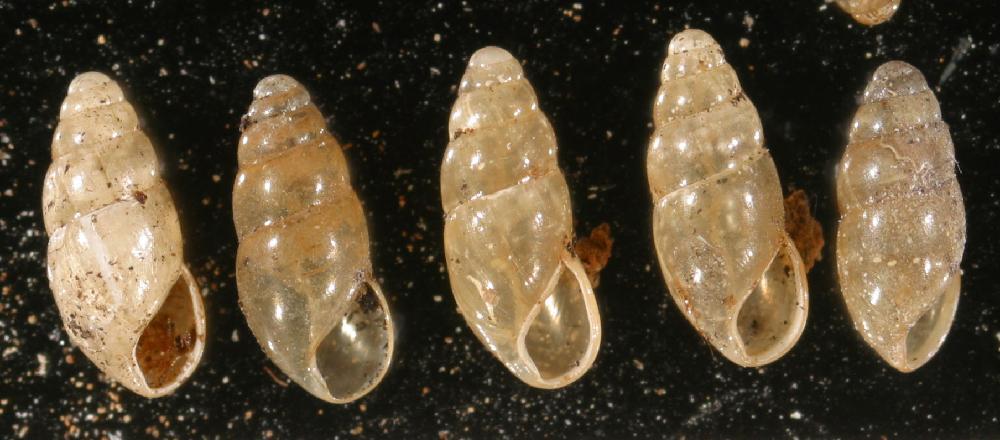Cochlicopa lubricella (Poro 1938)- Thin Pillar Snail
Identifying in the Field
 To
identify the Cochlicopa lubricella
(Poro 1938) you are usually
looking for a pillar like shell that is a maximum of 6 mm with
many whorls.
(Wayne, et al. 2009) It is usually tan or white with a pink or
white rib inside. The shell is usually extremely glossy.
(Wayne, et al. 2009)
This glossy affect is thought to protect from predators.
This family of snails will continuously clean their shell with
their radula to keep the maintain the glossiness. (Nordsieck 2009)
The whorls in the Cochlicopa lubicella
(Poro 1938) are usually more
rounded than the other species in this family and the shell is
commonly a little larger.
(Nordsieck 2009) The Cochlicopa lubricella
(Poro 1938)
is usually lighter in color then the Cochlicopa lubrica
(Muller 1774) (Nordsieck 2009). The
Cochlicopa lubricella (Poro 1938)tends to have a smaller foot.
(Pilsbry 1939-1948)
Some characteristics that can't be seen on the outside of these
snails is a lung with very fine capillaries, a kidney that is
long and triangular passing into a direct ureter.
(Pilsbry 1939-1948) A percardium which is much shorter than the kidney.
(Pilsbry 1939-1948) However there is a lot of
controversy on the identification of these snails compared to
other snails in this family. To understand the controversy
of these snails lets take
a look at the background.
To
identify the Cochlicopa lubricella
(Poro 1938) you are usually
looking for a pillar like shell that is a maximum of 6 mm with
many whorls.
(Wayne, et al. 2009) It is usually tan or white with a pink or
white rib inside. The shell is usually extremely glossy.
(Wayne, et al. 2009)
This glossy affect is thought to protect from predators.
This family of snails will continuously clean their shell with
their radula to keep the maintain the glossiness. (Nordsieck 2009)
The whorls in the Cochlicopa lubicella
(Poro 1938) are usually more
rounded than the other species in this family and the shell is
commonly a little larger.
(Nordsieck 2009) The Cochlicopa lubricella
(Poro 1938)
is usually lighter in color then the Cochlicopa lubrica
(Muller 1774) (Nordsieck 2009). The
Cochlicopa lubricella (Poro 1938)tends to have a smaller foot.
(Pilsbry 1939-1948)
Some characteristics that can't be seen on the outside of these
snails is a lung with very fine capillaries, a kidney that is
long and triangular passing into a direct ureter.
(Pilsbry 1939-1948) A percardium which is much shorter than the kidney.
(Pilsbry 1939-1948) However there is a lot of
controversy on the identification of these snails compared to
other snails in this family. To understand the controversy
of these snails lets take
a look at the background.

